This post may contain affiliate links. See my disclosure policy.
This Dutch Oven Pork Roast Recipe combines juicy, fall-apart pork and tender vegetables with a rich, flavorful garlic and herb sauce. It’s low-maintenance, ultra-comforting, and the perfect one-pot Sunday dinner that’s easy enough to make any day of the week!
You may also want to check out this recipe’s beefy relative, the classic Dutch Oven Pot Roast.
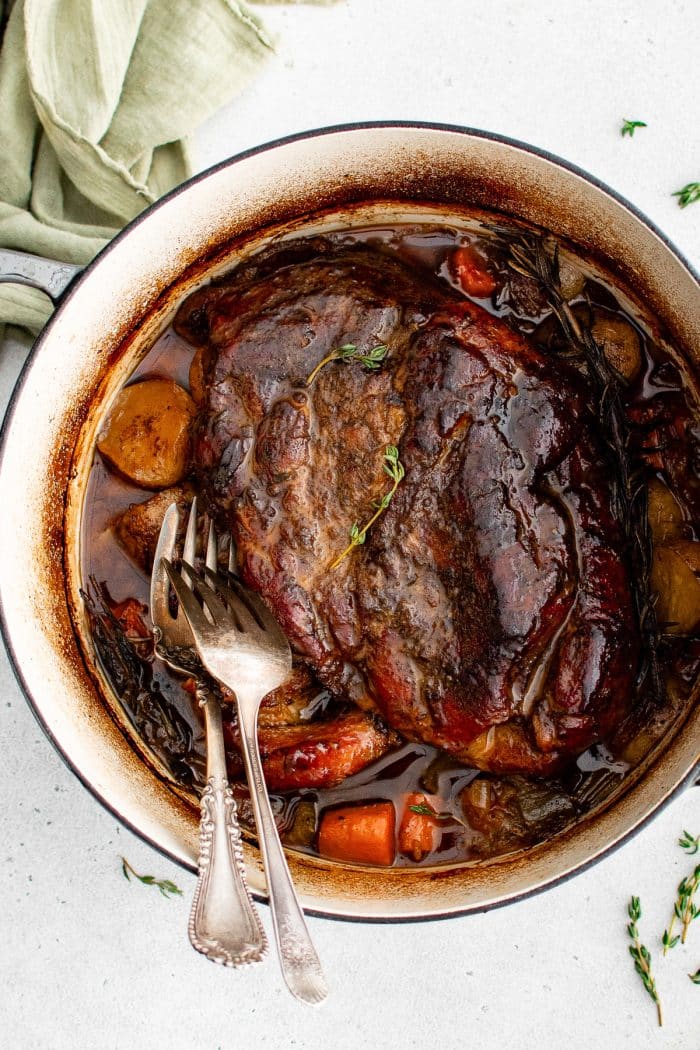
Why This Is The Best Pork Roast Recipe
If you’re looking for the ultimate Dutch oven pork roast recipe, this one checks all the boxes! It’s tender, juicy, packed with flavor, and so easy to make! Made entirely in one pot, it’s a simple, foolproof dish that starts by searing the pork to create a rich and flavorful caramelized crust. The meat, broth, and veggies are slowly cooked together, resulting in incredibly juicy, melt-in-your-mouth pork and vegetables bursting with garlic and herb-flavored cooking juices.
The best part? This is a true “set it and forget it” meal with just a few simple steps. Prep and cleanup couldn’t be easier, and it requires minimal effort to make. It’s the perfect cozy Sunday dinner, yet easy enough to make any day of the week. Plus! Leftovers taste even better the next day, and it’s very freezer-friendly. Let’s get started!
Table of Contents
Best Cut of Meat for a Pork Roast Recipe
For this pork pot roast recipe, you’ll want to use Pork Shoulder (a.k.a. Boston shoulder, pork butt, pork shoulder roast, or Boston butt). Here’s why: Pork shoulder is hardy, tough, full of connective tissue, relatively fatty, and absolutely delicious when slowly cooked in a Dutch oven. In this recipe, we’re cooking low and slow at 300°F for 2.5 to 3 hours or until the internal temperature reaches 195-205°F as measured by a digital meat thermometer.
The cuts of pork to avoid are pork loin roast and pork tenderloin. Although they can be cooked in a Dutch oven, they’re too lean and require different oven temperatures and cooking times. Check out this juicy, flavorful baked pork tenderloin to see the difference. (Hint: the oven temperature is high, and the cooking time is low!)
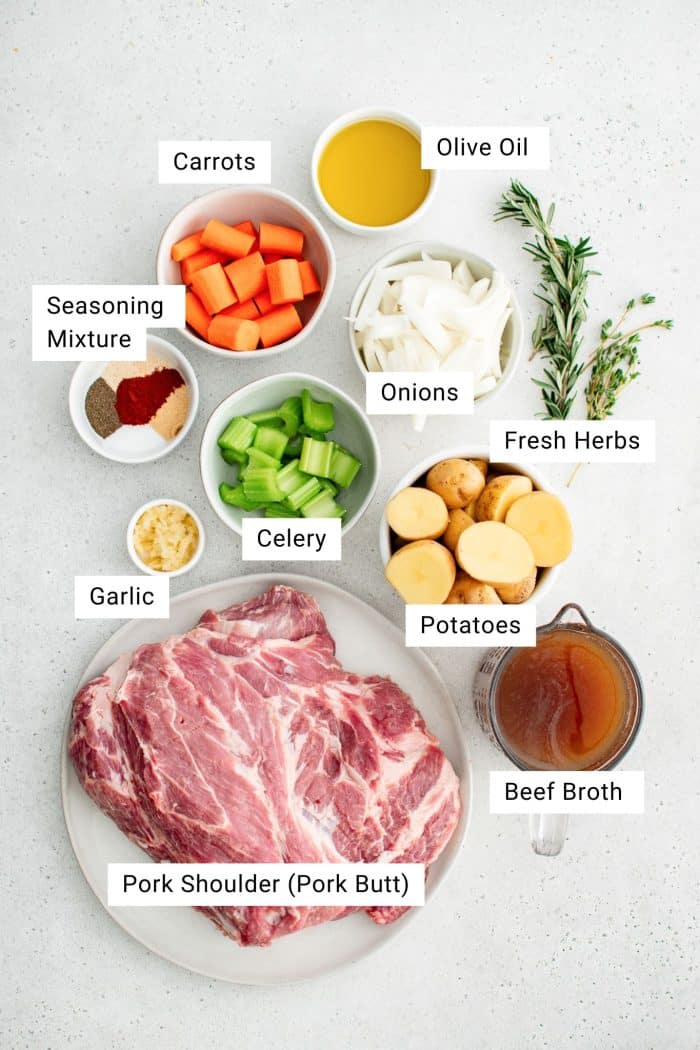
Why Use a Dutch Oven?
I will use my Dutch oven over a Crock Pot or Instant Pot any day of the week. I’ve found it to be the best tool for cooking not only the best pork roast but countless other dishes. So, what makes the Dutch oven so perfect for cooking pork roasts?
Well, personal preference aside, Dutch ovens are made from cast iron, which distributes heat evenly, prevents hot spots, and keeps the heat at a stable, consistent temperature. It has thick walls that help maintain a steady low temperature, essential for breaking down the tough fibers in pork shoulder. Its tight-fitting lid traps moisture, continuously basting the meat as it cooks and preventing the roast from drying out.
The Best Dutch Oven to Use for Pork Roast
When shopping for a cast-iron Dutch oven, there are two popular options: traditional cast iron and enamel-coated cast iron. Here’s a brief overview of each:
- Traditional: Made entirely of bare cast iron, traditional Dutch ovens require seasoning to maintain their nonstick surface and prevent rusting. They also react with acidic ingredients like tomatoes, vinegar, or wine, stripping the seasoning over time. One major benefit of bare cast iron is that it performs better at high-heat searing, which is crucial for achieving the golden crust on our pork roast. It’s the best option for searing meats before braising (and braising if acidic ingredients aren’t included), outdoor cooking, and frying.
- Enameled: Coated with a smooth enamel layer, these Dutch ovens do not require regular seasoning, are easier to clean (you can use soap!), and are non-reactive (acidic foods are allowed). Enameled cast iron can handle high-heat searing but not ultra-high temperatures, as the enamel can crack or discolor over time. They’re better looking (I’ll admit, they photograph better) and are best for braising meats, soups, stews, baking bread, and almost everything else.
So, which one should you use to make THIS Dutch oven pork pot roast?
Based on personal use, my top two recommendations are this Lodge 6-quart Enameled Dutch Oven with Lid (currently selling for $70.59 on Amazon, but the price changes frequently) or this Pre-Seasoned Lodge 7-quart Traditional Dutch Oven with Lid (currently selling for $53.03 on Amazon). I also own them in larger sizes (the 7.5-quart and the 9-quart, respectively) for cooking larger roasts, stews, or rice dishes. You can’t go wrong with any of these.
I also own several STAUB Dutch ovens in various colors and sizes (like this 5.5-quart Cocotte) that were gifted to me a few years back. Are they beautiful? Yes. But I much prefer my Lodge Dutch ovens. The knob on the lid and the handles feel better.
That was A LOT, I know. But I hope it was helpful!
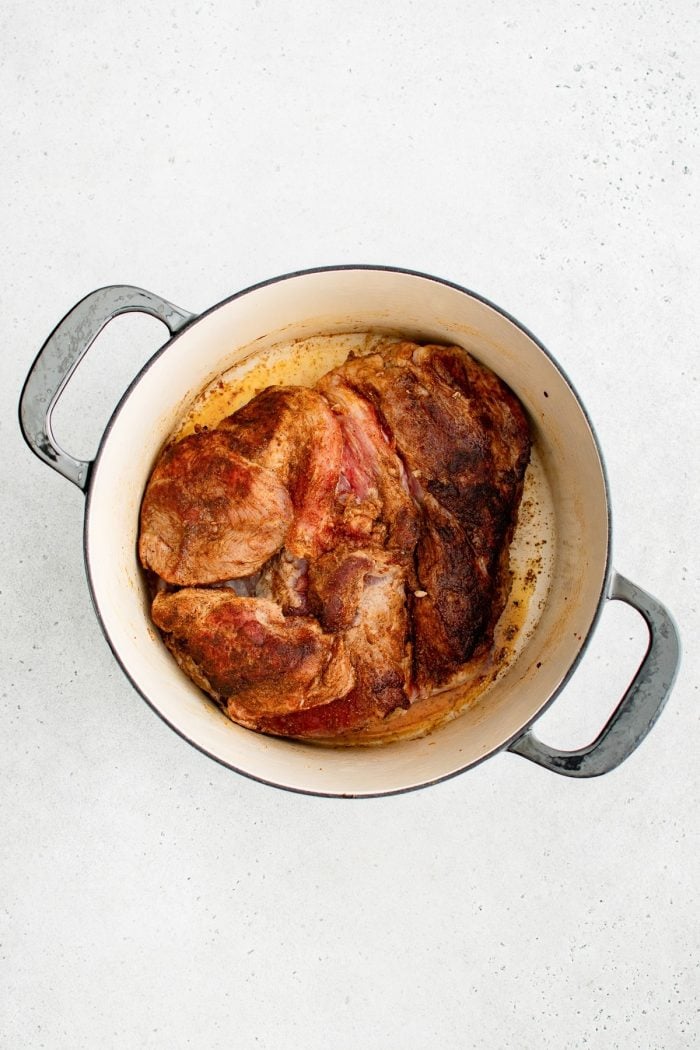
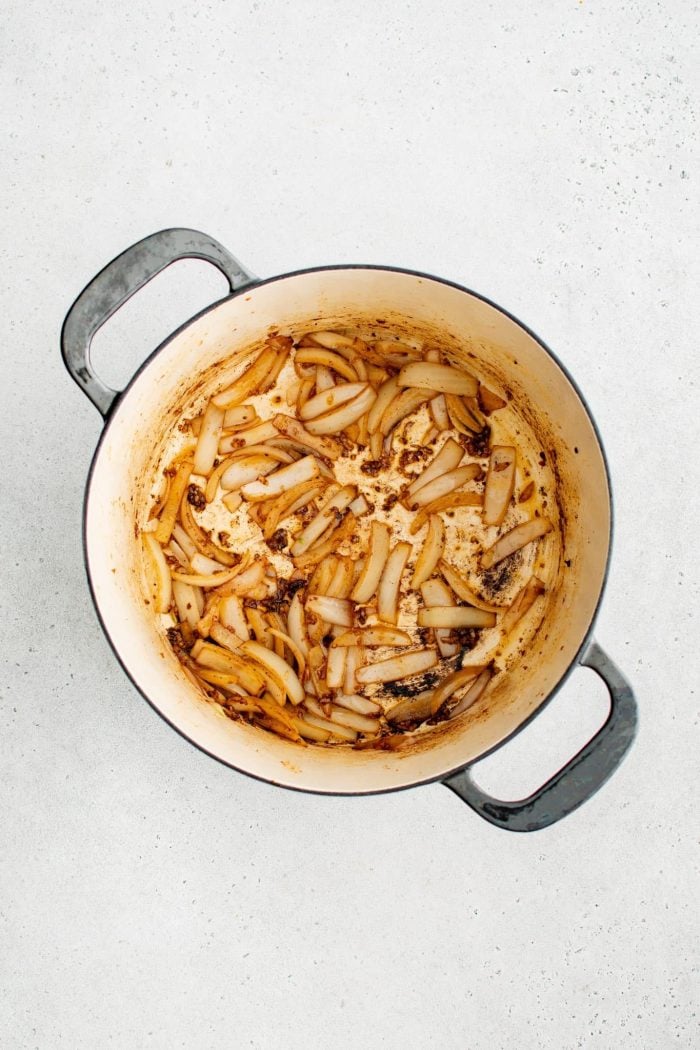
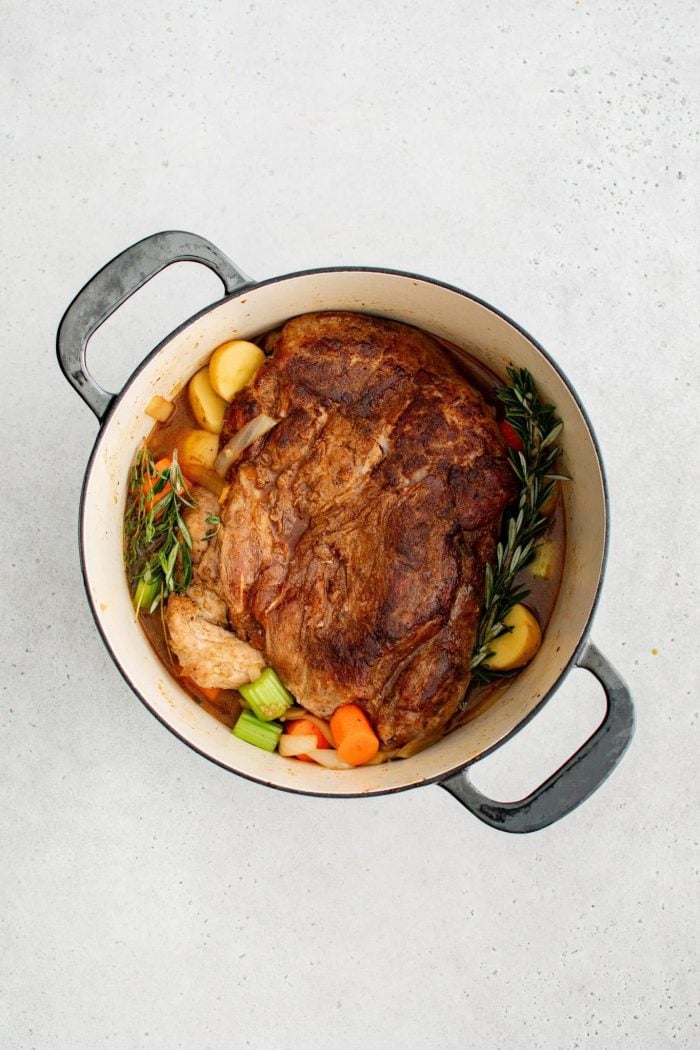
How to Make Dutch Oven Pork Roast
Personally, I like mushy, broth-bloated veggies, but if they’re not your thing, feel free to add them in the final hour of cooking. And remember to save the leftover juices to make a delicious homemade sauce or gravy.
- Mix the seasoning mixture in a small bowl.
- Rub the seasoning mixture over the entire surface of the pork shoulder.
- Sear the seasoned pork in a large Dutch oven set over high heat.
- Sauté the sliced onions and garlic until softened.
- Deglaze the pot, scraping up any brown bits stuck to the bottom.
- Add the vegetables, beef broth, and fresh herbs, and return the seared pork.
- Cover with an offset lid and slowly cook in a 300°F oven for approximately 2.5 to 3 hours.
- Rest for 10-15 minutes before shredding or slicing.
- Whisk in 1 tablespoon of cornstarch mixed with 2 tablespoons of water into the broth. Simmer over low heat until thickened (optional).
- Serve and enjoy!
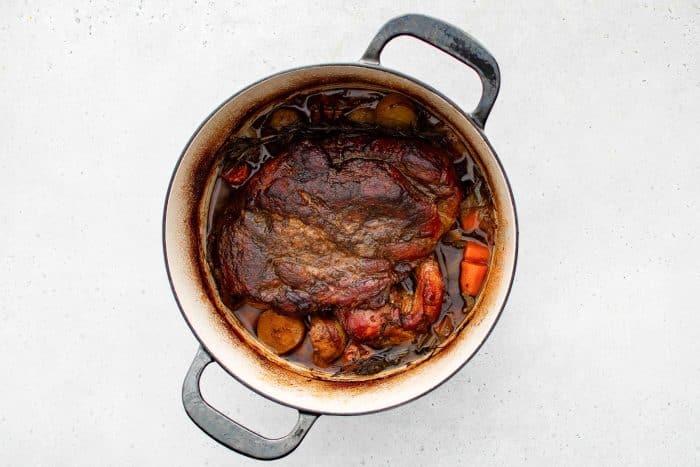
Serving Ideas and How to Use Leftover Pork Roast
This Dutch oven pork roast is a hearty meal on its own, but pairing it with the right sides and creatively using leftovers can make it even better.
Some of my favorite side dishes to serve with savory pork roast include apples (after all, pork and apples were basically made for each other). So, I’ll often include a variation of this spinach and apple salad, crunchy apple slaw, sweet fried apples, or applesauce. My family also loves it when I make homemade dinner rolls or flakey buttermilk biscuits.
Use leftovers to make yummy shredded pork sandwiches, pork soup, pork tacos, and, of course, pork scrambled eggs.
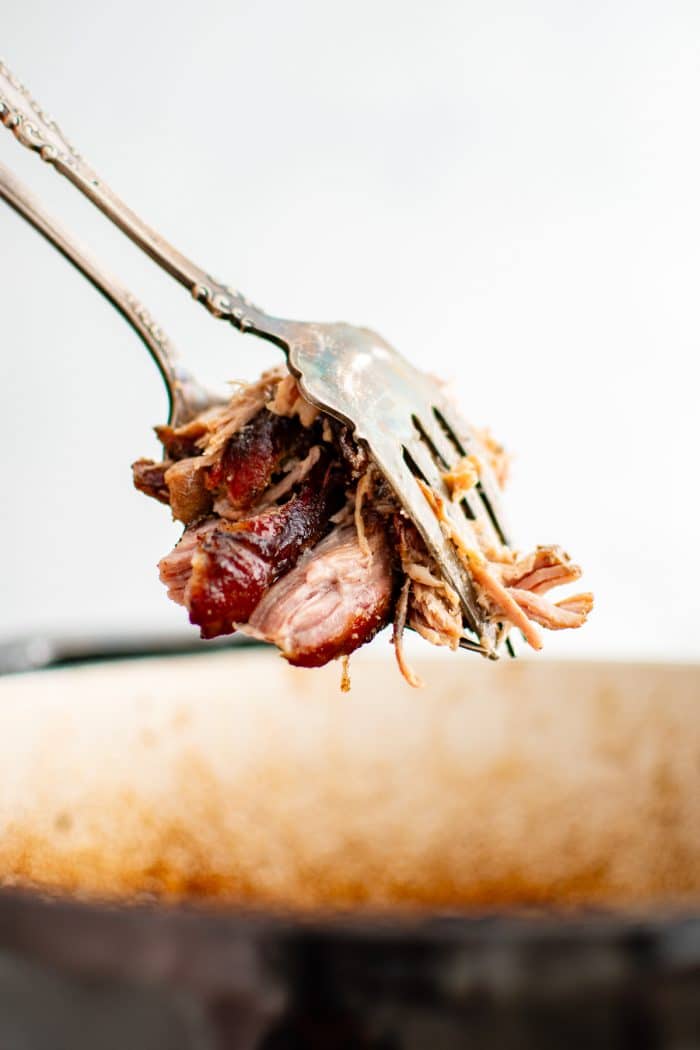
Your Questions, Answered
This recipe includes the usuals – onion, carrots, celery, and potatoes – but if you’re a veggie lover like myself, you may want to include other less common veggies like mushrooms, parsnips, Brussels sprouts, beetroot, or cabbage.
For this particular cut of pork (pork shoulder), it actually does better when it’s cooked beyond its “done-by” temperature. For pork, that’s about 140-145°F but for pork shoulder/pork butt you want to let it cook to at least 190°F or up to 205°F. I suggest always using a digital meat thermometer whenever meat is on the menu.
Yes! Sear the pork first, then cook on low for 8 hours or high for 4-5 hours. If you have any questions, be sure to check out my full recipe for Slow Cooker Pork Shoulder, Slow Cooker Pulled Pork, or Slow Cooked Carnitas.
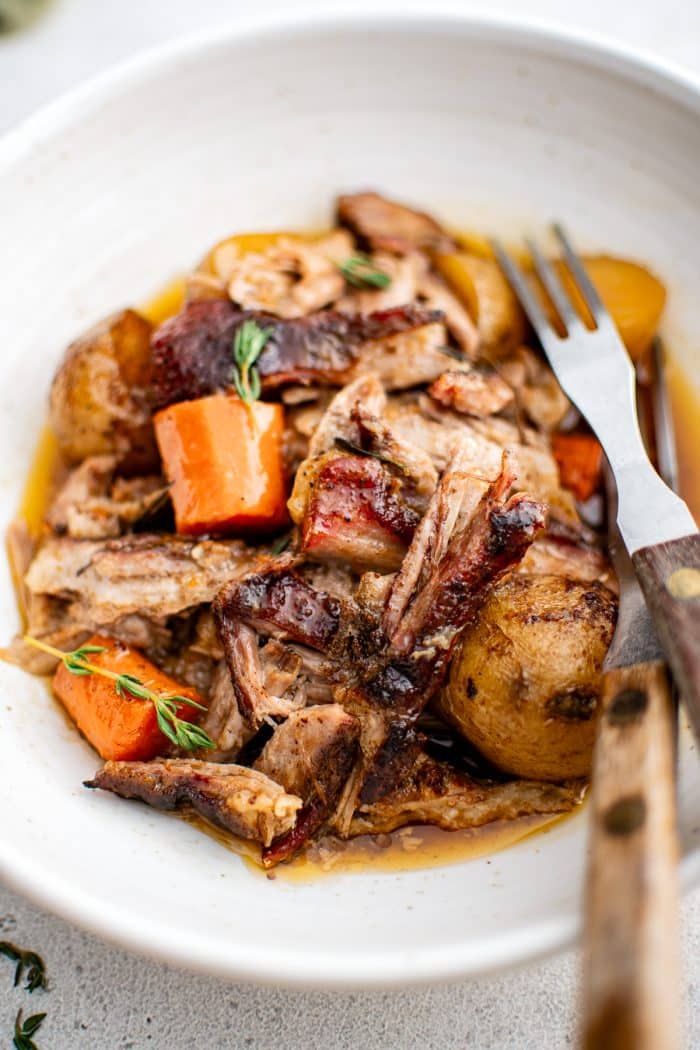
Have any questions? Drop me a message in the comment section below! I’m happy to help. And, if you enjoy this easy one-pot dinner, please rate it with some STAR LOVIN’ so other readers know to try it too! Tag me at #theforkedspoon. I’ll be sure to share! Thank you!
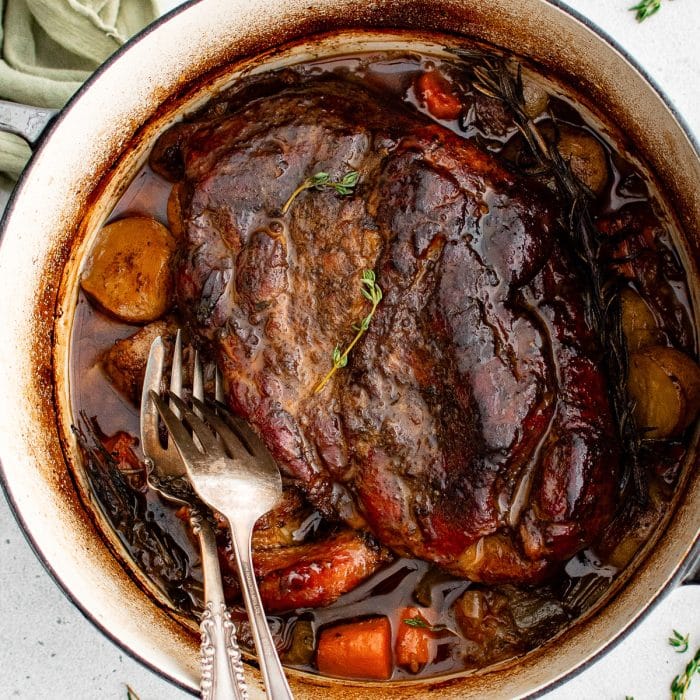
Dutch Oven Pork Roast (Easy One-Pot Recipe)
Equipment
- 6-Quart Enameled Cast Iron Dutch Oven If you're cooking a larger roast, use a 7 to 8-quart Dutch Oven.
Ingredients
- 3 pound pork shoulder (pork butt), trimmed of extra fat
- 2 teaspoon salt, divided
- 1½ teaspoon black pepper, divided
- 1 teaspoon garlic powder
- 1 teaspoon onion powder
- 1 teaspoon smoked paprika
- 2 tablespoon olive oil
- 1 large onion, sliced
- 4 cloves garlic, minced
- 2 cups beef broth
- 2 cups potatoes, (Yukon Gold or baby potatoes), cut into 1-inch chunks
- 1 cup carrots, cut into 1-inch chunks
- 3 stalks celery, cut into 1-inch chunks
- 2 sprigs fresh rosemary
- 2 sprigs fresh thyme
Instructions
- Preheat the oven to 300 degrees Fahrenheit and prepare the ingredients.
- Pat the pork shoulder dry with paper towels. This helps the seasoning stick to the pork, creating a crisper, more golden-brown crust.
- In a small bowl, mix the salt (1 teaspoon), black pepper (1 teaspoon), garlic powder, onion powder, and smoked paprika.
- Rub the seasoning blend evenly over the entire surface of the pork.
- Heat 2 tablespoons of olive oil in a large Dutch oven over high heat. Once the oil is shimmering (that's how you know it's hot), add the pork shoulder and sear for 3-4 minutes per side until a deep golden-brown crust forms. Remove the pork from the Dutch oven and set it aside.
- Reduce the heat to medium. Add the sliced onion and cook for 3-5 minutes, stirring occasionally until softened. Then, stir in the minced garlic and cook for 30 seconds until fragrant.
- Pour in 2 cups of beef broth, scraping the bottom of the pot with a wooden spoon to lift any flavorful browned bits stuck to the bottom (this enhances the gravy). Add the carrots, potatoes, celery, and remaining salt (1 teaspoon) and black pepper (½ teaspoon).
- Return the seared pork shoulder to the Dutch oven, nestling it into the broth and veggies. Gently push the fresh rosemary and thyme sprigs into the broth.
- Cover with an offset lid and transfer to the oven. Slowly cook for 3 hours until it registers at least 190°F or up to 205°F and the pork is fork-tender and easily pulls apart with two forks. Halfway through cooking, spoon some juices over the pork to keep it moist. See notes for making gravy.
- Remove the rosemary and thyme sprigs before serving. Slice or shred the pork and serve it with the tender vegetables and broth as a natural gravy.
Notes
- Refrigerate leftovers in an airtight container for up to 3 days.
- To freeze, place leftover shredded pork in a freezer-safe container or zip-top bag with (or without) the juices. Freeze for up to 3 months and thaw overnight in the refrigerator before reheating.
- Reheating (oven): Preheat the oven to 350°F. Place the pork and vegetables in an oven-safe dish and cover with foil. Heat for 15-20 minutes, or until warmed through.
- Reheating (microwave): Microwave at 30-second increments, until heated.
Nutrition
Nutrition information is automatically calculated, so should only be used as an approximation.

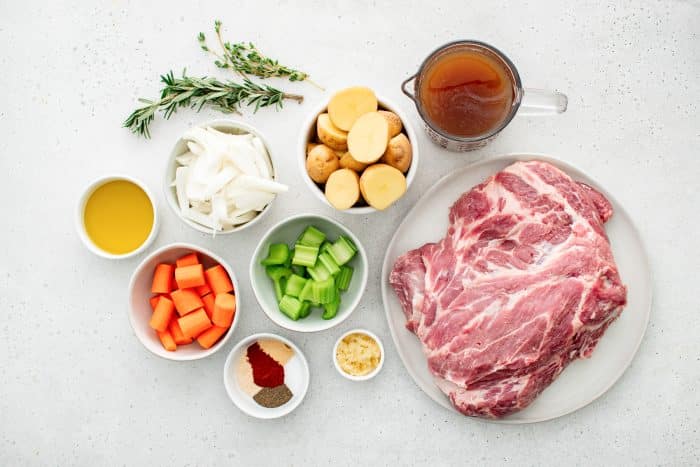
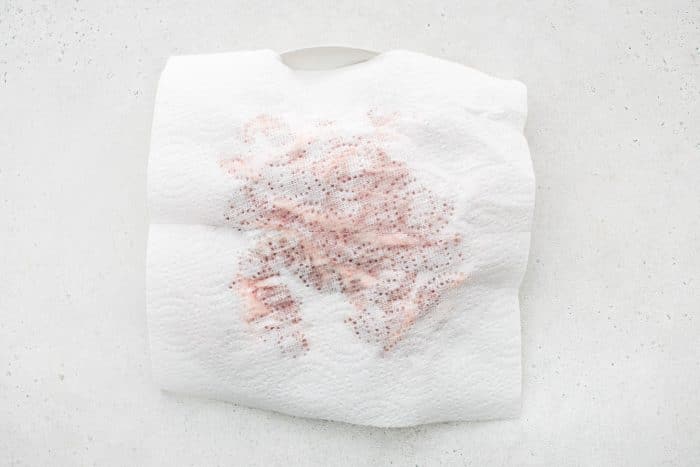
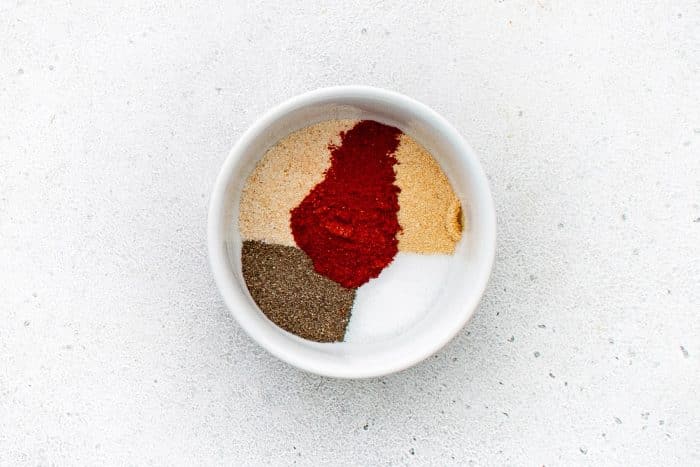
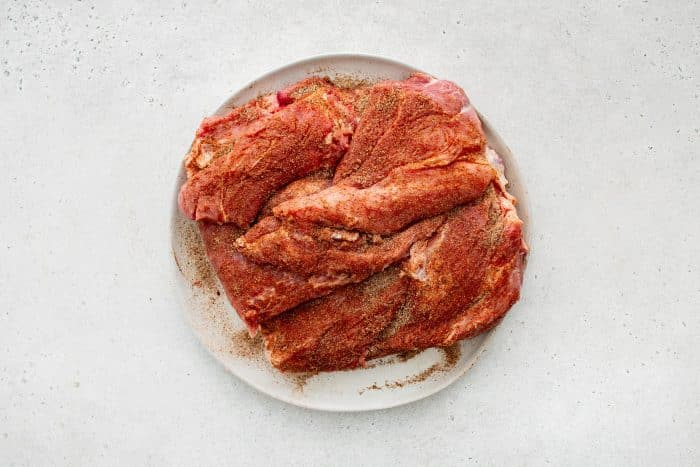
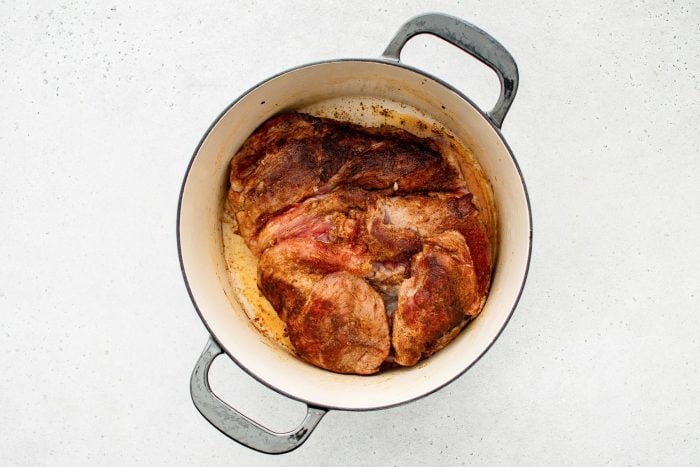
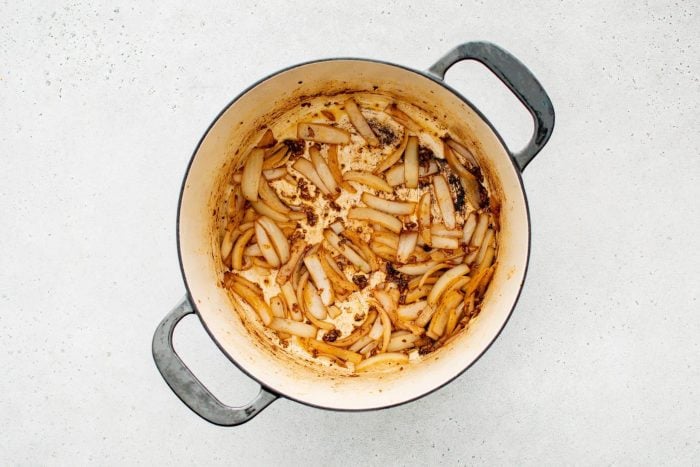
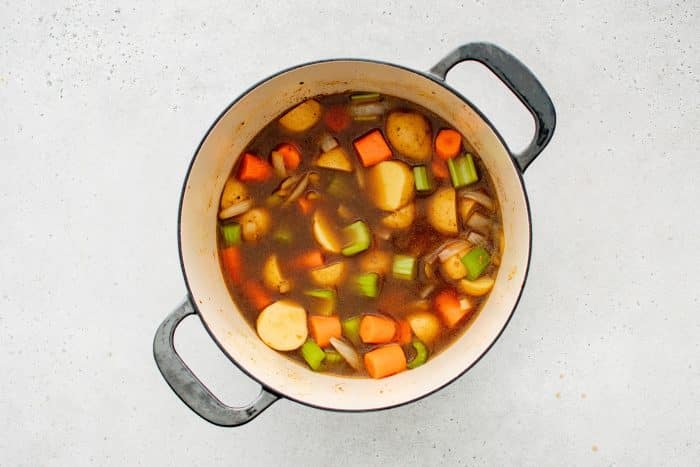
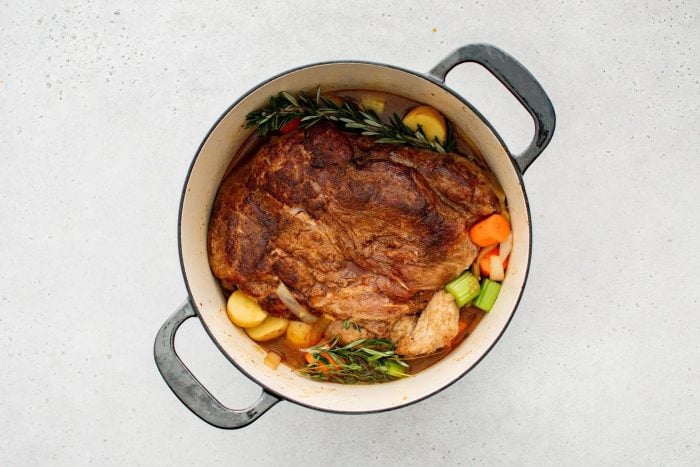
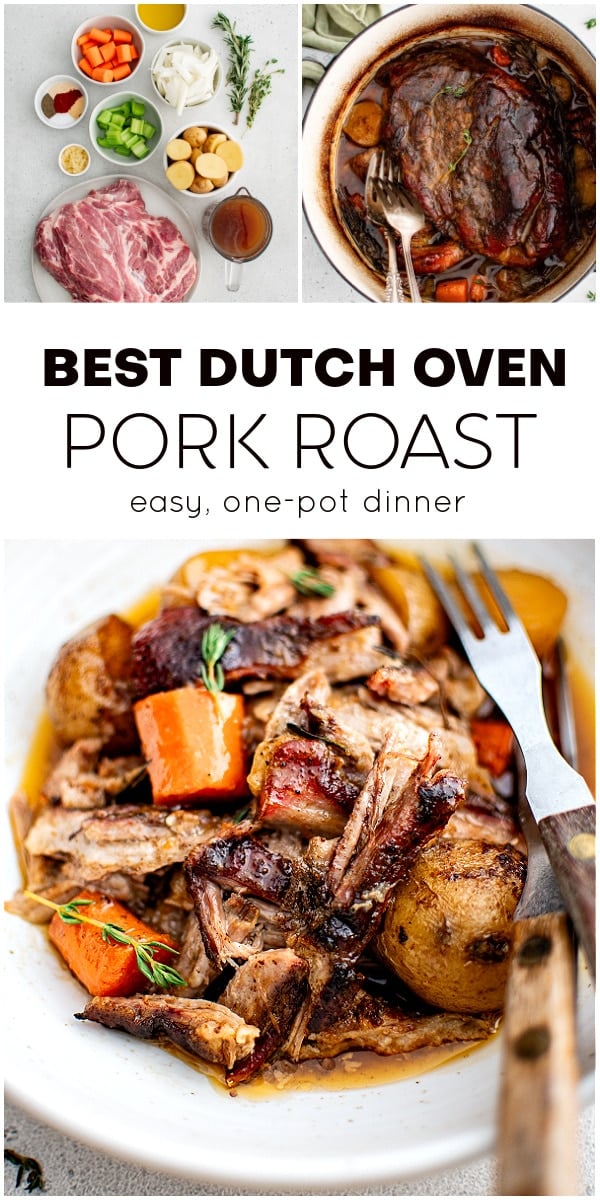

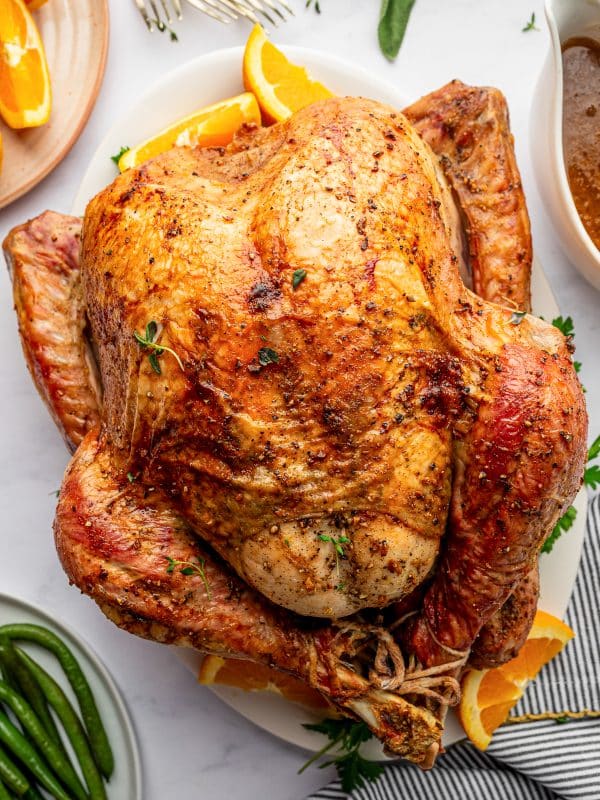
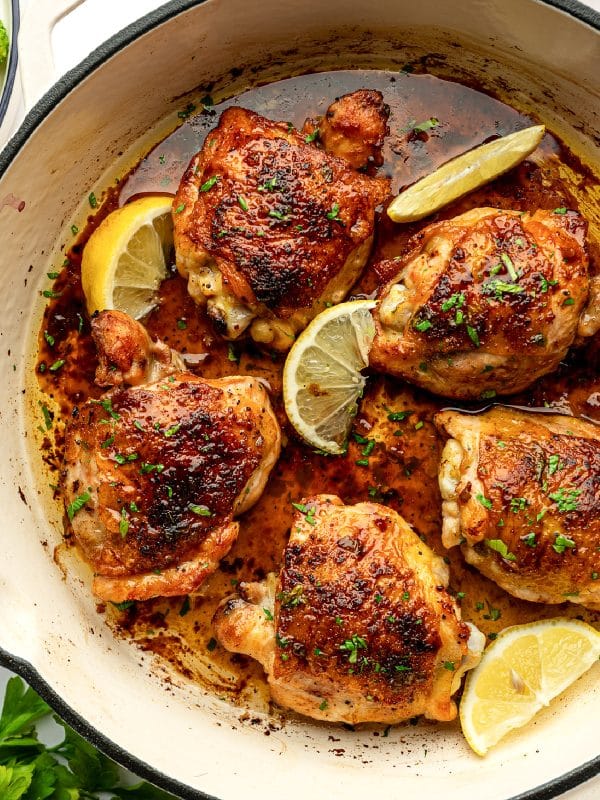
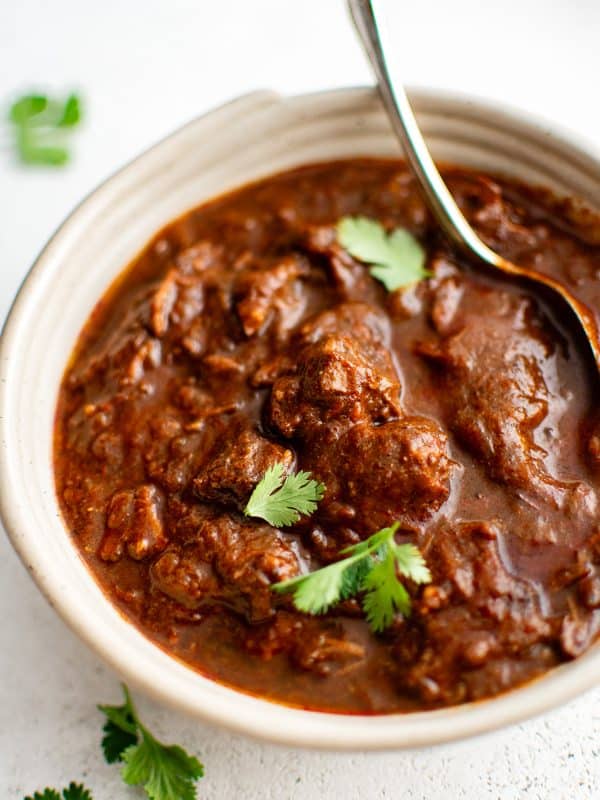









This was one of the best pork roasts I have ever made! Awesome recipe!
I really appreciate the feedback and rating, thanks for letting me know Suzy 🙂
Very good made it for a birthday Sunday family dinner. Watch the browning of pork the fattest side started to burn but did not spoil the dinner. Also added cut up yams would add them halfway thru next time as they were mushed, the carrots, potatoes and onions were fine . Everyone liked it more economical than a beef roast
Thank you so much for sharing this, and I am glad it was a hit for Sunday dinner! Great tips on watching the fat side while browning and adding yams halfway through – those little adjustments make the recipe your own, and I love hearing what worked for you. 🙂
This recipe was fabulous. Before I found the recipe I was marinating the pork in apple cider but followed the rest of the recipe as stated. A terrific Sunday meal with plenty of leftovers. Will definitely safe this one!
Thank you so much! I am thrilled you loved it, and the apple cider marinade is a delicious twist – those gentle apple notes pair beautifully with pork. 🙂
can I make this with a bone in pork shoulder roast, that’s 10 pounds??? how would I adjust the time or even heat?
Yes, bone-in pork shoulder works great, even at 10 pounds. If it fits your Dutch oven, keep the temp around 300°F, add enough liquid to come 1 to 2 inches up the sides, cover, and cook until probe-tender 195°F (plan about 6 to 8 hours; start checking around 5½ hours), flipping once halfway. If it is too big for the pot, cut it in half and cook side-by-side (or use a deep roasting pan tightly covered with foil). Let it rest 20 to 30 minutes before shredding; if you prefer sliceable meat, pull it a bit earlier around 180°F.
I made this tonight super easy and my whole family loved it I had a acorn squash that needed to be cooked so I put that in it and it was amazing !also added the cabbage as suggested .so good !!thank you so much ..it is a keeper for sure
Love this – so glad it was a hit! Acorn squash and cabbage are perfect here.
Made this tonight and it came out delicious. Husband loved it also, added it to his favorite meals list. Will definitely be making this again.
My husband said it was one of the best meals I’ve made!
That makes me so happy to hear! I’m so glad you both enjoyed it—thank you for taking the time to share! 🙂